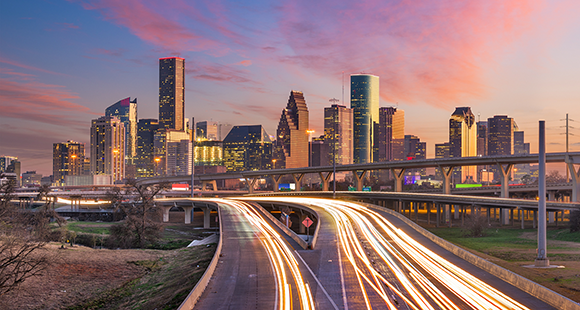Since March 2020, the pandemic has significantly altered the way people have approached food procurement, curtailing dining/shopping out, with a shift to take out and delivery. With the arrival of vaccines and the pent-up urge to “get out of the house”, early signs show a rebound in shopping/dining out, and a thawing of online grocery and food delivery demand. Is this just a temporary rebound? If so, will there be another major shift in the supply chain?
Few times in recent history have world or national events shifted day-to-day life the way COVID-19 has. In the span of a few days in March 2020, people emptied grocery shelves and many dine-in restaurants closed their doors as everyone went into quarantine. Food delivery and take out already had a meaningful foothold in our lives, but not what they would quickly become.
This trend was evidenced in US Census data, as Year Over Year Monthly Grocery Sales averaged a 10% increase in 2020 over 2019. Conversely, restaurant sales averaged a 12% decline over the same period.
Many experts believe that Amazon grocery, Uber Eats and the like are here to stay and will ultimately displace the traditional in-person model for food procurement. However, as vaccination rates increase across the country, states are already aggressively relaxing in-person limits, with many completely removing them and their stay-at-home protocols. Whether this is due to politics and/or COVID Fatigue, people seem to be eager to return to life as it was before the pandemic.
Restaurants that are willing to open for dine-in service are packed (as much as they can be). Spring Break travel is surging. Summer appears to be ripe for large numbers of people to be on the move. Presuming this trend continues and is not derailed by new COVID variants running rampant, I would argue that the supply chain around online grocery will need to re-adjust to be closer to the pre-COVID model. People will want to go to markets and pick out their own meat and produce again.
Further, the restaurant industry will rebound, and the restaurant supply chain will grow, as hotels and dine-in restaurants greet guests in pre-COVID numbers. The ingredients are all there: economic growth, pent-up demand, and a need to socialize again (not over Zoom).
However, real estate developers are still betting on the effects of COVID. The US Census reports that cold storage construction spending is up 5.8% in January 2021, versus the prior year. A subset of this additional cold storage construction is a small, but growing, trend of market-specific speculative cold storage development.
I am sure many will say that the “return to normal” in grocery shopping and dining out is some sort of short-term claw back from COVID. Maybe they are right, but I believe that what we have all endured has left long-term scars. Our desire to be with people, out of the house, and experience the many things we took for granted pre-COVID will become a lasting appreciation for many.
Few times in recent history have world or national events shifted day-to-day life the way COVID-19 has. In the span of a few days in March 2020, people emptied grocery shelves and many dine-in restaurants closed their doors as everyone went into quarantine. Food delivery and take out already had a meaningful foothold in our lives, but not what they would quickly become.
Restaurant supply chain to surge back
This sudden shift was not easily met by suppliers, at first. Remember the toilet paper rationing? It did not take long, however, for the supply chain to adjust. By the summer of 2020, most grocery and food suppliers had restored inventory, but the surge in online grocery and takeout eating remained, as limits on in-person capacity continued.This trend was evidenced in US Census data, as Year Over Year Monthly Grocery Sales averaged a 10% increase in 2020 over 2019. Conversely, restaurant sales averaged a 12% decline over the same period.
Many experts believe that Amazon grocery, Uber Eats and the like are here to stay and will ultimately displace the traditional in-person model for food procurement. However, as vaccination rates increase across the country, states are already aggressively relaxing in-person limits, with many completely removing them and their stay-at-home protocols. Whether this is due to politics and/or COVID Fatigue, people seem to be eager to return to life as it was before the pandemic.
Restaurants that are willing to open for dine-in service are packed (as much as they can be). Spring Break travel is surging. Summer appears to be ripe for large numbers of people to be on the move. Presuming this trend continues and is not derailed by new COVID variants running rampant, I would argue that the supply chain around online grocery will need to re-adjust to be closer to the pre-COVID model. People will want to go to markets and pick out their own meat and produce again.
Further, the restaurant industry will rebound, and the restaurant supply chain will grow, as hotels and dine-in restaurants greet guests in pre-COVID numbers. The ingredients are all there: economic growth, pent-up demand, and a need to socialize again (not over Zoom).
How will this shift affect industrial real estate?
My prediction is slowing growth for large cold storage space, less last mile distribution and more demand from the hotel/restaurant supply industry. We can already see some numbers supporting this in states like Florida and Texas. For example, cold storage demand from the end of 2020 and the start of 2021 is down substantially from the Summer/Fall 2020 pandemic levels for pork, chicken, and turkey according to the USDA.However, real estate developers are still betting on the effects of COVID. The US Census reports that cold storage construction spending is up 5.8% in January 2021, versus the prior year. A subset of this additional cold storage construction is a small, but growing, trend of market-specific speculative cold storage development.
I am sure many will say that the “return to normal” in grocery shopping and dining out is some sort of short-term claw back from COVID. Maybe they are right, but I believe that what we have all endured has left long-term scars. Our desire to be with people, out of the house, and experience the many things we took for granted pre-COVID will become a lasting appreciation for many.



